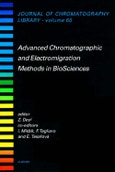Each chapter is completed with a list of recent literature covering the 1987-1997 period, which can be used for further guidance of the reader in his/her own field. The chapters have been written by specialists in a particular area and with an emphasis on applications to the biomedical field. This implies that theoretical and instrumental aspects are kept to a minimum which allows the reader to understand the text. Considerable attention is paid to method selection, detection and derivatization procedures and troubleshooting. The majority of examples given represent the analyses of typical naturally-occurring mixtures. Adequate attention is paid to the role of the biological matrix and sample pretreatment, and special attention is given to forensic, toxicological and clinical applications. The book is completed with an extensive Index of Compounds Separated.
Please Note: This is an On Demand product, delivery may take up to 11 working days after payment has been received.








